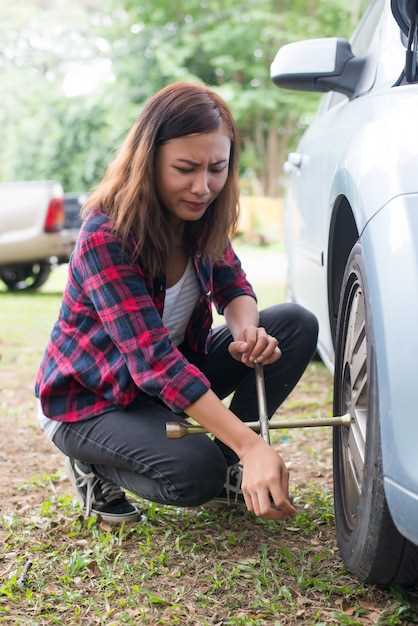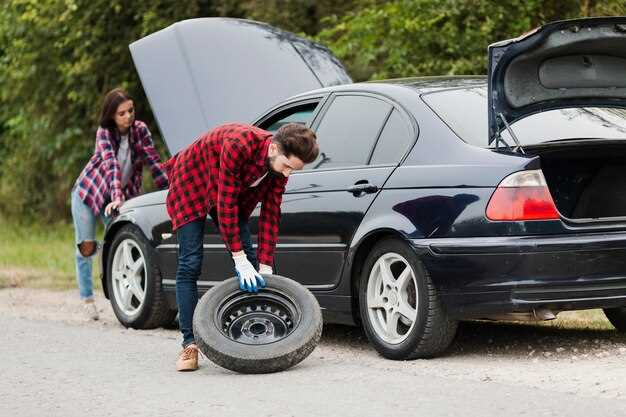
As a proud owner of a VW Corrado, ensuring your vehicle’s performance goes beyond just routine maintenance. One of the most critical aspects to focus on is the timely swap of tires as the seasons change. This guide aims to help you navigate the essential steps involved in switching between summer and winter tires, ensuring that your Corrado remains at its best regardless of the weather.
During the summer months, the right tires can significantly enhance your driving experience, providing optimal grip and better fuel efficiency. However, transitioning to winter tires is equally important to ensure safety on icy or snowy roads. Understanding when and how to perform your seasonal tire swap is essential not only for optimizing performance but also for extending the lifespan of your tires.
In this guide, we’ll cover the key considerations for VW Corrado owners, including the ideal times to swap your tires, the unique needs of your vehicle, and tips for proper storage of your summer tires when not in use. This knowledge will keep your Corrado performing at its peak throughout the changing seasons.
Choosing the Right Winter Tires for Your VW Corrado
When preparing your VW Corrado for the winter season, selecting the right winter tires is crucial for safety and performance. Winter tires are specifically designed to handle cold temperatures, snow, and icy conditions, providing better grip and control compared to all-season tires. Here are key factors to consider when choosing winter tires for your vehicle.
| Factor | Description |
|---|---|
| Tread Pattern | Look for tires with deep grooves and specialized tread patterns that enhance traction on snow and ice. Sipes, or small slits in the tread, improve grip in slippery conditions. |
| Rubber Compound | Ensure the tires use a soft rubber compound that remains flexible in low temperatures. This flexibility improves road contact and traction when driving in winter conditions. |
| Size and Fitment | Choose tires that match the specifications outlined in your VW Corrado’s owner manual. Proper size ensures optimal handling and prevents potential damage to the vehicle. |
| Studded vs. Non-Studded | Determine whether you need studded tires for extreme icy conditions or non-studded options that perform well in snowy and wintry weather without the added noise and road wear from studs. |
| Brand Reputation | Select reputable brands known for quality winter tires. Research reviews and ratings to ensure reliable performance in harsh conditions. |
Investing in the right winter tires for your VW Corrado can significantly enhance your driving experience and safety during the colder months. Consider the factors outlined above to make an informed decision that meets your specific winter driving needs.
How to Properly Store Your Summer Tires During Winter
Proper storage of your summer tires during the winter months is essential to maintain their performance and extend their lifespan. To start, make sure your tires are clean and dry before storing them. Use a mild soap and water solution to remove dirt, brake dust, and grime. Allow them to air dry completely to prevent moisture buildup, which can lead to mold and degradation.
Once your tires are clean and dry, inspect them for any visible damage, such as cracks, bulges, or punctures. It’s best to address any issues before storing them for the winter. Consider marking the tires for their specific positions on your vehicle – front left, front right, etc. – to ensure proper reinstallation in the spring.
When storing your summer tires, choose a cool, dry, and dark environment. Avoid direct sunlight and extreme temperatures, as these factors can cause the rubber to deteriorate. A basement, garage, or a dedicated storage shed are ideal locations.
If your tires are mounted on wheels, stack them vertically to save space and prevent deformation. If they are unmounted, consider storing them upright rather than flat. This position can help maintain their shape. If you choose to stack them, limit the stacks to no more than four tires high to avoid unnecessary pressure on the bottom tires.
To further protect your summer tires, you may want to wrap them in plastic or tire bags. This measure provides an additional barrier against dust, moisture, and UV exposure. It also helps keep them organized and makes it easier to handle them when it’s time for reinstallation.
Lastly, be mindful to check your tires periodically during the winter storage period. This routine inspection allows you to catch any potential issues early, ensuring your summer tires are in excellent condition when you are ready to swap them back onto your VW Corrado.
Critical Signs It’s Time to Replace Your Summer Tires

Maintaining optimal performance and safety in your VW Corrado is crucial, and this starts with properly managing your summer tires. There are several critical signs that indicate it may be time to replace your summer tires:
- Tread Wear: Check the tread depth of your summer tires. If it reaches 2/32 of an inch or less, it’s time for a replacement. Uneven wear patterns can also indicate other issues that require attention.
- Cracks and Cuts: Inspect your tires for visible cracks, cuts, or bulges. Damage to the sidewalls or tread can compromise tire integrity and safety.
- Loss of Traction: If you notice decreased grip or increased slipping on wet or dry surfaces, it may signal that your summer tires have worn out and should be replaced.
- Vibration or Noise: Unusual vibrations or noises while driving can indicate tire problems. If these persist, it’s best to have your tires examined and potentially replaced.
- Age of Tires: Even if the tread appears adequate, tires deteriorate over time. If your summer tires are more than six years old, consider replacing them, regardless of their condition.
Regularly monitoring these indicators will ensure your summer tires provide the performance and safety required for driving your VW Corrado effectively.
Step-by-Step Instructions for DIY Tire Swapping
Swapping tires on your VW Corrado between winter and summer seasons is a straightforward process that can be accomplished with some basic tools and safety precautions. Follow these step-by-step instructions to ensure a safe and effective tire change.
Tools Required: You will need a jack, jack stands, a lug wrench, and optionally, a tire pressure gauge. Make sure your workspace is clean, flat, and free of obstacles.
Step 1: Prepare Your Vehicle – Begin by parking your VW Corrado on a level surface. Engage the parking brake and turn off the engine. It’s advisable to remove any hubcaps or wheel covers if your wheels have them.
Step 2: Loosen Lug Nuts – Before lifting the car, use the lug wrench to slightly loosen the lug nuts on all four wheels. Turn them counterclockwise, but do not remove them completely yet. This step prevents the wheels from spinning while the car is elevated.
Step 3: Lift the Vehicle – Position the jack under the car’s designated lifting points as specified in your owner’s manual. Lift the vehicle until the tires are off the ground. For safety, place jack stands under the vehicle to provide additional support.
Step 4: Remove the Lug Nuts – Now, completely remove the loosened lug nuts from the first wheel. Keep them in a safe place as you will need them to install the new tires.
Step 5: Remove and Replace the Tire – Take off the tire and replace it with the seasonal tire (either winter or summer). Make sure the new tire is properly aligned with the wheel hub.
Step 6: Hand-Tighten the Lug Nuts – Place the lug nuts back onto the wheel studs and hand-tighten them in a star pattern. This ensures even pressure across the wheel.
Step 7: Lower the Vehicle – Carefully remove the jack stands and lower the vehicle back to the ground using the jack. Make sure the vehicle is stable before proceeding.
Step 8: Final Tightening – Once the vehicle is on the ground, use the lug wrench to firmly tighten the lug nuts in a star pattern. This will secure the wheel properly. Refer to your vehicle’s manual for the correct torque specifications.
Step 9: Repeat for Remaining Tires – Repeat the process for all remaining tires, whether you are installing summer or winter tires.
Step 10: Check Tire Pressure – After all tires are installed, check their pressure using a tire pressure gauge to ensure they are inflated to the recommended PSI levels for either winter or summer driving.
Following these steps will help you effectively swap tires on your VW Corrado, making sure you are well-prepared for any season!
Essential Tools Needed for a Safe Tire Change

When changing tires on your VW Corrado, whether swapping for summer or winter tires, having the right tools is crucial for safety and efficiency. Below are the essential tools you will need:
1. Jack: A reliable hydraulic or scissor jack is necessary to lift your vehicle off the ground. Ensure that the jack is compatible with your Corrado’s weight and has a stable base to prevent slipping during the tire change.
2. Jack Stands: Once the vehicle is lifted, jack stands should be placed under the car to provide additional support. This step is vital for safety, as it prevents accidents while you work on the tires.
3. Lug Wrench: A lug wrench, also known as a tire iron, is essential for loosening and tightening the lug nuts that hold the tires in place. A breaker bar can be helpful for stubborn nuts that require extra leverage.
4. Torque Wrench: After installing your new tires, a torque wrench ensures that the lug nuts are tightened to the manufacturer’s specifications. This prevents any issues related to over or under-tightening, especially important for maintaining safety on the road.
5. Tire Pressure Gauge: Maintaining the correct tire pressure is vital for optimal performance and safety. A tire pressure gauge will help you monitor the pressure in your summer and winter tires, ensuring they are properly inflated.
6. Gloves: To protect your hands from dirt and potential injuries, wearing sturdy gloves is recommended. They provide grip and prevent blisters while handling tools and tires.
7. Cleaning Supplies: It’s a good practice to clean the wheel rims and check for any damage during a tire change. Having a brush or cloth and some cleaning solution can help in maintaining the condition of your tires and rims.
By ensuring you have these essential tools on hand, you can execute a safe and efficient tire change for your VW Corrado, whether you are preparing for summer or winter driving conditions.
Understanding Tire Pressure Adjustments for Seasonal Changes
Proper tire pressure is critical for optimal performance and safety, especially for VW Corrado owners who frequently change tires between summer and winter. As temperatures fluctuate with the seasons, tire pressure can be significantly affected, impacting handling, fuel efficiency, and tire wear.
In summer, higher temperatures can increase tire pressure. It’s essential to check and adjust the pressure regularly, as heat can cause a rise of about 1 PSI for every 10°F increase in temperature. For summer tires, refer to the manufacturer’s recommended PSI, usually found in the owner’s manual or on a sticker located in the driver’s side door jamb.
Conversely, winter months bring colder temperatures. As the temperature drops, tire pressure decreases–approximately 1 PSI for every 10°F drop. It’s crucial to monitor pressure frequently during winter, as under-inflated tires can lead to reduced traction and increased tire wear. Make sure to inflate winter tires to the recommended level to maintain optimal grip in snowy or icy conditions.
Regularly checking tire pressure before seasonal changes and adjusting accordingly will contribute to a smoother, safer driving experience. Use a reliable tire pressure gauge for accuracy and ensure that tires are cold when measuring to obtain the most precise readings.
By understanding how seasonal changes affect tire pressure, VW Corrado owners can improve vehicle performance, enhance safety, and extend tire life.








